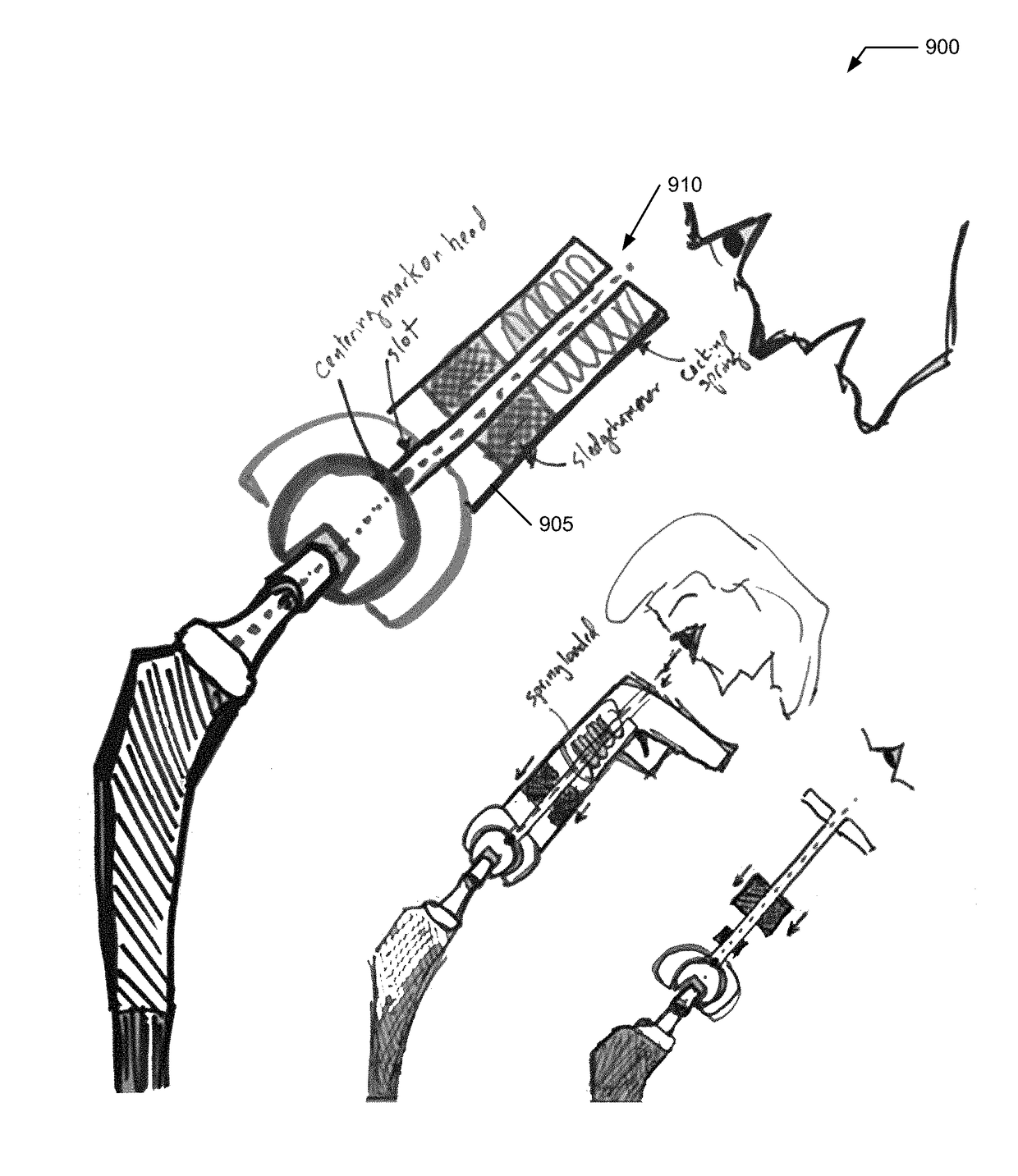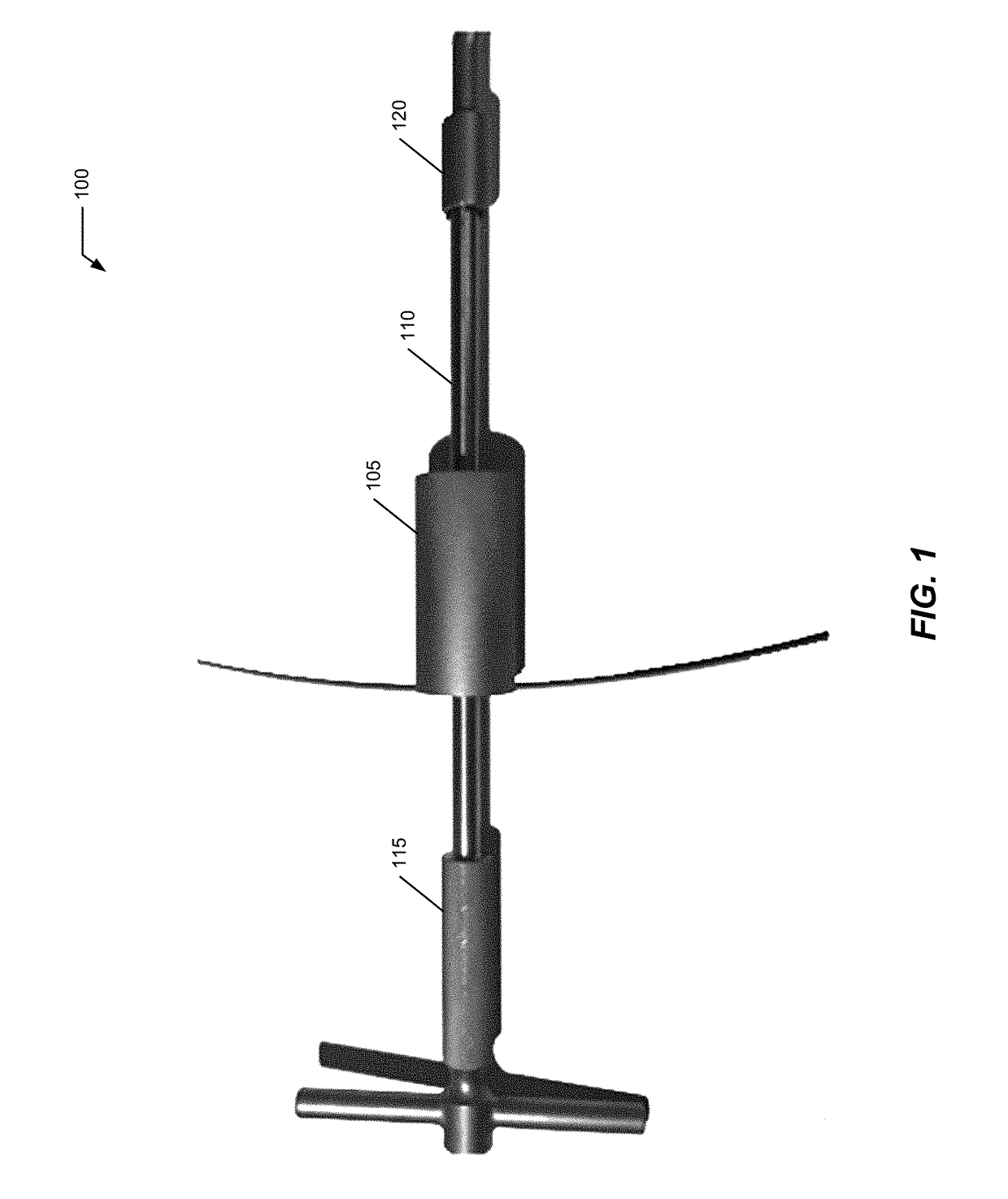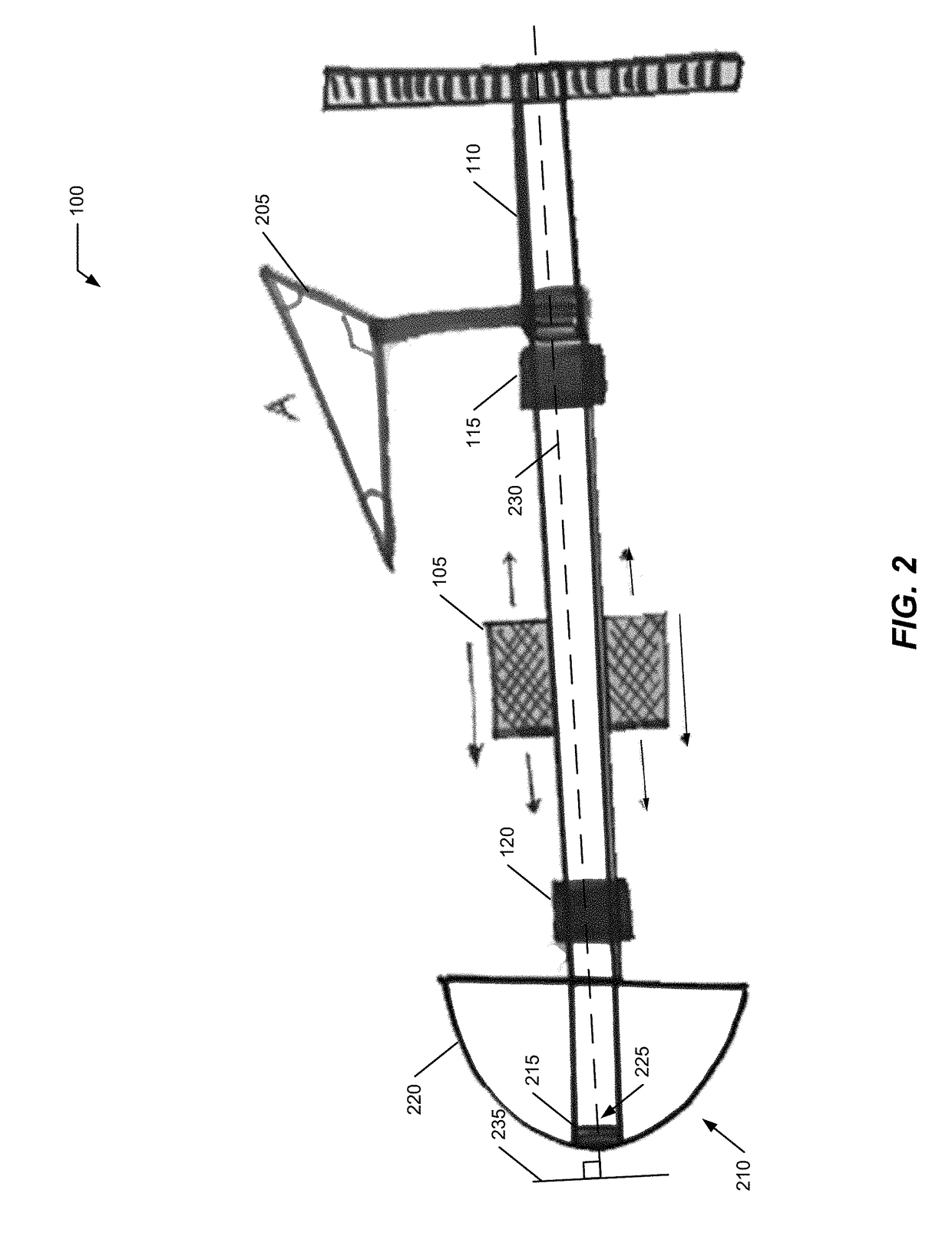Assembler for modular prosthesis
a modular prosthesis and assembly technology, applied in the field of prosthesis installation, can solve the problems of high unreliable acetabular cup implantation process, inconvenient placement of acetabular cup, and mal-alignment of cup, so as to improve site preparation, improve the effect of cutting, trimming, drilling and drilling
- Summary
- Abstract
- Description
- Claims
- Application Information
AI Technical Summary
Benefits of technology
Problems solved by technology
Method used
Image
Examples
embodiment 500
[0070]FIG. 5 illustrates an alternative embodiment 500 to the devices of FIG. 1-4 including a pressure sensor 505 to provide feedback during installation. With respect to management of the force required for some of these tasks, it is noted that with current techniques (the use of the mallet) the surgeon has no indication of how much force is being imparted onto the implant and / or the implant site (e.g., the pelvis). Laboratory tests may be done to estimate what range of force should be utilized in certain age groups (as a rough guide) and then fashioning a device 500, for example a modified sledgehammer 100 or cockup gun 300 to produce just the right amount of force. Typically the surgeon may use up to 2000N to 3000N of force to impact a cup into the acetabular cavity. Also, since some embodiments cannot deliver the force in an incremental fashion as described in association with the BMD3 device, device 500 includes a stopgap mechanism. Some embodiments of the BMD3 device have alre...
first embodiment
[0103]FIG. 14 illustrates a first embodiment for a BMD5 tool 1400 used in cooperation with assembly of modular prosthesis 700 to install head 710 onto trunion taper 715 at an end of stem 720. Prosthesis 700 is modified to include a grip structure 1405 (e.g., an indentation, hole, cavity, aperture, and the like) to allow engagement of a retention structure (e.g., a claw, grasper, gripper, and the like—represented by G) coupled to both tool 1400 and to prosthesis 700. Optional grip structure 1405 may be used to reduce or eliminate wasting of kinetic energy during assembly and welding of head 710 onto taper 715.
[0104]BMD5 tool 1400 includes a head grasper 1410, an in-line force sensor module 1415, a torquer 1420, and torque converter 1425. Head grasper 1410 retains and aligns head 710 into an optimum installation orientation (e.g., perpendicular / normal) to allow application of force only along an assembly axis 1430 joining, and aligned with, grip structure 1405, head 710, taper 715, gr...
second embodiment
[0111]FIG. 15 illustrates a second embodiment for a BMDS tool 1500 used in cooperation with assembly of modular prosthesis 700 to install head 710 onto trunion taper 715 at an end of stem 720. Tool 1500 varies from tool 1400 in that tool 1500 performs insertion using a vibration profile. The vibration profile is provided by a vibration engine 1505 that may include a rotary motor 1510 coupled to a linear motion converter 1515 to impart a vibration to head grasper 1410 (and then to head 710) to insert and cold weld head 710 onto trunion taper 715. There are other ways to implement vibration engine 1505.
[0112]In operation, tool 1500 may join head 710 to taper 715 with a vibratory force (implicating a blend of static and kinetic coefficients of friction—Us and Uk), which may require less force than a series of discrete / dynamic impacts onto head 710.
PUM
 Login to View More
Login to View More Abstract
Description
Claims
Application Information
 Login to View More
Login to View More - R&D
- Intellectual Property
- Life Sciences
- Materials
- Tech Scout
- Unparalleled Data Quality
- Higher Quality Content
- 60% Fewer Hallucinations
Browse by: Latest US Patents, China's latest patents, Technical Efficacy Thesaurus, Application Domain, Technology Topic, Popular Technical Reports.
© 2025 PatSnap. All rights reserved.Legal|Privacy policy|Modern Slavery Act Transparency Statement|Sitemap|About US| Contact US: help@patsnap.com



